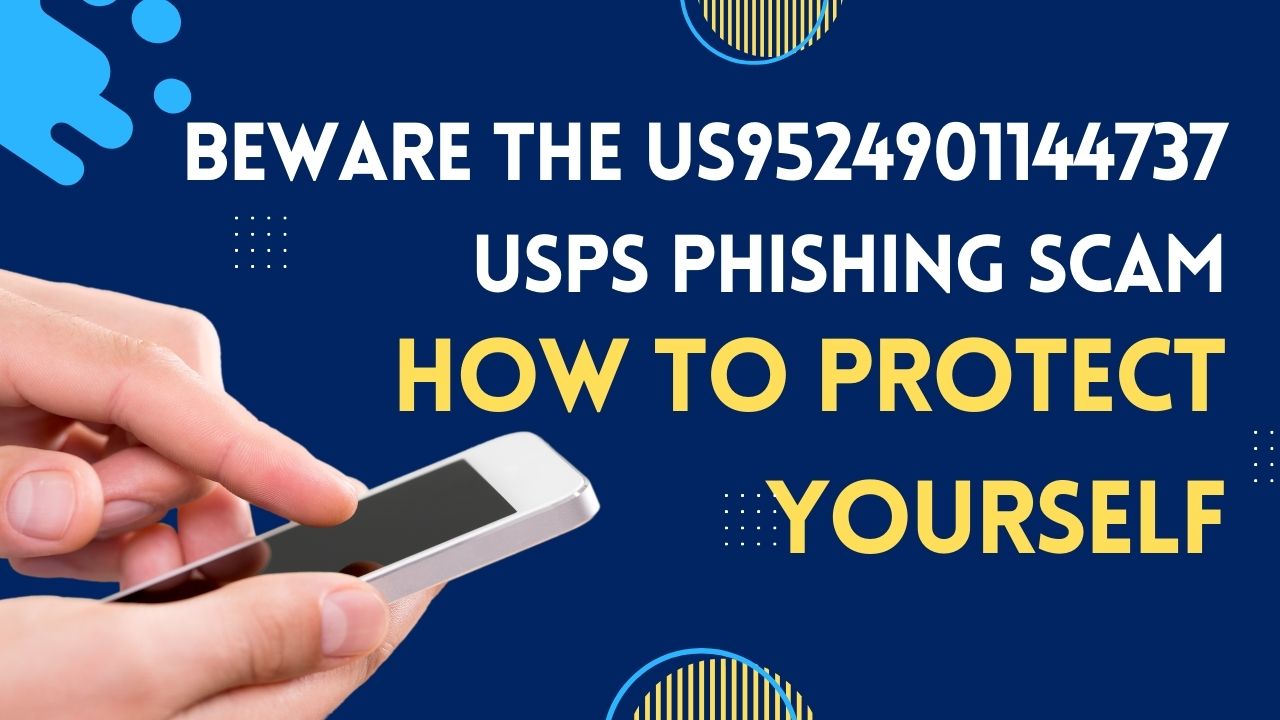The US9524901144737 phishing scam is a sophisticated scheme that impersonates the United States Postal Service (USPS) to steal personal and financial information from unsuspecting victims. Scammers send fake text messages or emails claiming a USPS package is being held due to an “incomplete address” and urging recipients to click a link to update their information.
The fraudulent message includes a realistic-looking USPS tracking number, typically starting with “US952490114473”, to lend an air of legitimacy. However, the USPS does not send unsolicited texts or emails about unclaimed packages. Clicking the link leads to a convincing replica of the USPS website designed to harvest sensitive data like names, addresses, and credit card numbers.
Once scammers obtain this information, they can commit identity theft, drain bank accounts, make fraudulent purchases, or sell the data on the black market. With millions of packages shipped daily, this scam exploits the likelihood that many people are expecting deliveries and may fall for the urgent, yet deceptive message.
How to Stay Safe from the US9524901144737 Scam
Be skeptical of unsolicited messages claiming to be from USPS, especially those with alarming language about a failed delivery or requesting personal information. Remember, the USPS will not contact you about unclaimed packages out of the blue.
Do not click links or download attachments from suspicious emails or texts. Instead, navigate directly to the official USPS website by typing the URL into your browser to check your package status.
Verify the sender’s identity before responding to any message. Check for misspellings, grammatical errors, or strange email addresses and phone numbers that don’t match official USPS contacts.
Enable two-factor authentication on your accounts whenever possible to add an extra layer of security in case your password is compromised.
Keep your software and operating system updated to protect against the latest security threats and vulnerabilities that scammers may exploit.
What to Do if You’re a Victim of the US9524901144737 Scam
If you’ve fallen for this scam and provided personal or financial information, act quickly to minimize the damage:
- Contact your bank or credit card issuer immediately to report the fraudulent activity, cancel any compromised cards, and dispute unauthorized charges.
- Change your passwords on any accounts that may be affected, using strong, unique passwords for each one.
- Monitor your credit report for suspicious activity and consider placing a fraud alert or freeze on your credit file to prevent scammers from opening new accounts in your name.
- Report the scam to the proper authorities, including the USPS Postal Inspection Service (email spam@uspis.gov), the Federal Trade Commission (ReportFraud.ftc.gov), and your local police department.
- Run a virus scan on your device if you clicked any links or downloaded attachments to check for malware.
Other USPS Scams to Watch Out For
The US9524901144737 scam is just one of many USPS-related phishing attempts. Other common variations include:
- Fake “missed delivery” notices left on your door with a phone number to call for redelivery, which is a scammer trying to get your personal information.
- Phony emails or texts claiming you need to pay a customs fee or tax to release your package, often with a link to a payment page that steals your financial data.
- Scammers posing as USPS officials contact you by phone, email, or social media and asking you to verify personal details or payment information for a supposed delivery issue.
To protect yourself, always be cautious of unsolicited messages, double-check the sender’s identity, and contact the USPS directly using verified contact information if you have concerns about a package.
The Bottom Line
The US9524901144737 USPS phishing scam is a prime example of how cybercriminals prey on people’s trust in well-known institutions to steal sensitive data. By staying vigilant, knowing the red flags, and taking swift action if you’re targeted, you can safeguard your personal and financial information from falling into the wrong hands.
Remember, the USPS will never contact you unexpectedly demanding personal details or payment to release a package. If you receive a suspicious message, don’t engage with it – instead, report it to help prevent others from becoming victims. Together, we can fight back against these insidious scams and keep our online lives secure.

